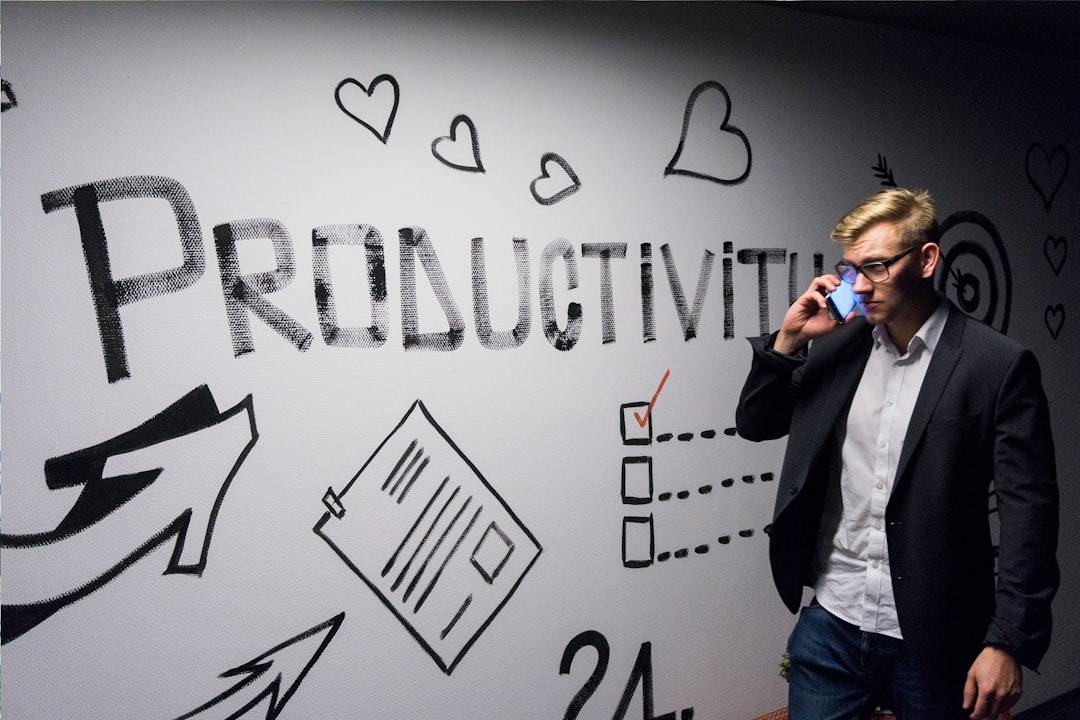Productivity is a hot topic, but figuring out how to be productive can feel overwhelming. With endless distractions vying for our attention, it’s no wonder many of us struggle to get things done efficiently. But don’t worry – by implementing a few key strategies, you can dramatically boost your productivity and accomplish more in less time.
Let’s explore some proven productivity techniques that go beyond the usual advice. We’ll look at research-backed methods, expert insights, and practical tips from productive people you can use immediately to supercharge your productivity.
Table Of Contents:
- Understand Your Productivity Patterns
- Optimize Your Environment for Focus
- Master the Art of Time Blocking
- Harness the Power of Deep Work
- Use the Two-Minute Rule
- Implement the Eisenhower Matrix
- Practice the Pomodoro Technique
- Leverage Technology Wisely
- Prioritize Self-Care
- FAQs about how to be productive
- Conclusion
Understand Your Productivity Patterns
Before exploring specific productivity hacks, it’s essential to understand your own natural rhythms and tendencies. We all have different peak productivity times and energy fluctuations throughout the day, and individuals may find themselves more efficient at certain times than others.
Take time to observe productivity levels when you feel most focused and energized. Are you a morning person who knocks out big tasks before lunch? Or do you hit your stride in the afternoon or evening hours?
Track Your Productivity
One effective way to identify your productivity killer patterns is to track your time and energy levels for a week or two. You can use a simple spreadsheet or a time-tracking app like Toggl to log your activities and rate your focus/energy on a scale of 1-10 throughout each day.
After collecting this data, look for trends when you’re most and least productive. You may notice that you consistently have an energy slump right after lunch or that you’re hyper-focused first thing in the morning.
Understanding these patterns allows you to schedule your most important or challenging work during peak productivity windows. You can also plan easier tasks or breaks during your natural lulls.
Optimize Your Environment for Focus
Your physical workspace dramatically impacts your ability to concentrate and get things done efficiently. Creating an environment conducive to deep focus is critical to improving how to be productive to achieve your professional goals.
Minimize Distractions
Start by identifying and eliminating as many potential distractions as possible:
- Turn off notifications on your phone and computer.
- Use website blockers to limit access to time-wasting sites.
- Wear noise-canceling headphones if you work in a noisy environment.
- Clear clutter from your desk and workspace.
Optimize Lighting and Temperature
Proper lighting and temperature can significantly affect your focus and energy levels. Natural light is ideal, but if that’s impossible, use full-spectrum bulbs that mimic daylight.
Aim for a room temperature between 68-72°F (20-22°C), which research shows is optimal for productivity. Consider using a smart thermostat to automate temperature control and maximize comfort.
Incorporate Nature
Studies have found that exposure to nature can boost cognitive function and reduce stress. If possible, position your workspace near a window with a greenery view.
You can also add plants to your office or use nature sounds as background noise. The presence of nature can create a calming and inspiring atmosphere.
Master the Art of Time Blocking
Time blocking is a powerful productivity technique many successful entrepreneurs and executives use. It involves dividing your day into defined chunks dedicated to specific tasks or types of work. It can transform the way you manage your daily schedule.
How to Implement Time Blocking
- Start by listing out your key responsibilities and recurring tasks.
- Estimate how much time each task typically takes.
- Schedule blocks in your calendar for each task/category.
- Stick to your schedule as much as possible, avoiding context switching.
- Leave buffer time between blocks for unexpected issues or overruns.
- Review and adjust your time blocks regularly based on what’s working.
Time blocking helps you stay focused by eliminating decision fatigue about what to work on next. It also ensures you allocate sufficient time to essential but non-urgent tasks that might otherwise get neglected.
Harness the Power of Deep Work
In his book Deep Work, author Cal Newport argues that the ability to focus without distraction on cognitively demanding tasks is becoming increasingly rare and valuable in our hyper-connected world. Deep work requires intense concentration and focus, allowing one to produce high-quality work.
Strategies for Deep Work
To cultivate deep work and boost your productivity:
- Schedule dedicated deep work sessions (ideally 90 minutes or longer).
- Eliminate all potential distractions during these sessions.
- Set clear goals for what you want to accomplish.
- Take short breaks between deep work sessions to recharge.
Regular deep work practice allows you to produce higher-quality, challenging tasks in less time. It’s a crucial skill for how to be productive in our distraction-filled world.
Use the Two-Minute Rule
Productivity expert David Allen popularized the two-minute rule in his book “Getting Things Done.” The basic premise is simple: if a task will take less than two minutes to complete, do it immediately rather than putting it off. This straightforward approach can significantly impact your overall productivity.
This rule helps prevent small tasks from piling up and becoming overwhelming. It also gives you quick wins throughout the day, boosting motivation and momentum.
Examples of two-minute tasks:
- Responding to a short email.
- Filing a document.
- Making a quick phone call.
- Adding an item to your grocery list.
By completing these quick tasks immediately, you will free up mental energy to focus on larger, more complex projects.
Implement the Eisenhower Matrix
Named after President Dwight D. Eisenhower, this productivity tool helps you prioritize tasks based on their importance and urgency. The matrix divides tasks into four quadrants:
| Urgent and Important | Important but Not Urgent |
|---|---|
| Do these tasks immediately | Schedule these tasks |
| Urgent but Not Important | Neither Urgent nor Important |
| Delegate these tasks if possible | Eliminate these tasks |
Using this matrix helps you focus on what truly matters rather than getting caught up in busy work or urgent but unimportant tasks. It’s a valuable tool for anyone learning how to be productive and manage their time effectively.
Practice the Pomodoro Technique
The Pomodoro Technique, developed by Francesco Cirillo in the late 1980s, is a time management method that uses a timer to break work into intervals, traditionally 25 minutes in length, separated by short breaks. This technique is widely used to enhance focus and combat procrastination.
How to Use the Pomodoro Technique
- Choose a task to work on.
- Set a timer for 25 minutes.
- Work on the task until the timer rings.
- Take a short 5-minute break.
- After four “pomodoros,” take a longer 15-30 minute break.
This technique leverages our natural attention spans and helps maintain focus by providing regular breaks. It’s particularly useful for tasks that require sustained concentration.
Leverage Technology Wisely
While technology can be a major source of distraction, when used intentionally, it can also significantly boost your productivity. Here are some tools and apps that can help you stay on track:
- RescueTime: Automatically tracks time spent on various applications and websites, providing insights into your productivity patterns.
- Todoist: A powerful to-do list and task management app that helps you organize and prioritize your work.
- Notion: An all-in-one workspace for note-taking, project management, and collaboration.
- Freedom: Blocks distracting websites and apps across all your devices during focused work sessions.
Remember, the key is to choose tools that enhance your workflow without adding unnecessary complexity. Evaluate your needs and select tools that align with your work style and preferences.
Prioritize Self-Care
It might seem counterintuitive, but taking care of yourself is crucial for sustained productivity. Neglecting your physical and mental health will inevitably lead to burnout and decreased efficiency. Self-care is not selfish; it invests in your well-being and productivity.
Key Self-Care Practices for Productivity
- Get enough sleep: Aim for 7-9 hours per night to ensure your brain functions at its best.
- Exercise regularly: Physical activity boosts energy, mood, and cognitive function.
- Eat a balanced diet: Proper nutrition fuels your body and mind for peak performance.
- Practice mindfulness or meditation: These techniques can reduce stress and improve focus.
- Take regular breaks: Stepping away from work periodically helps prevent mental fatigue and maintains productivity.
By prioritizing self-care, you’ll have more energy and focus to tackle your work efficiently for improving productivity.
FAQs about how to be productive
How do I make myself productive?
Start by understanding your natural rhythms and organizing your day to increase productivity. Use techniques like time blocking and the Pomodoro method to structure your work.
Eliminate distractions, prioritize tasks using tools like the Eisenhower Matrix, and don’t forget to take care of your physical and mental health.
How can I increase my productivity?
Optimizing your work environment, mastering time management techniques, and wisely leveraging technology can increase productivity. Practice deep work, use the two-minute rule for small tasks, and regularly review and adjust your strategies.
Remember, productivity is a skill that improves with consistent practice and refinement.
How can I be 100% productive?
While it’s unrealistic to be 100% productive all the time, you can maximize your productivity by implementing a combination of strategies. Focus on high-impact tasks, minimize distractions, take regular breaks to recharge, and continually refine your work processes.
Remember that productivity isn’t about being busy all the time but about making meaningful progress on important goals.
How to be productive that girl?
“That girl” productivity often refers to a highly organized, goal-oriented lifestyle. To achieve this, start by setting clear goals and creating structured routines. Prioritize self-care, maintain a clean and organized environment, and use tools like planners or productivity apps to stay on track.
Remember, the key is finding a sustainable approach that works for you rather than trying to emulate someone else’s routine.
Conclusion
Learning how to be productive is an ongoing journey, not a destination. It requires experimentation, self-reflection, and a willingness to adapt your strategies as your needs and circumstances change. By implementing the techniques we’ve discussed – from understanding your productivity patterns to mastering time management tools and prioritizing self-care – you can significantly boost your efficiency and accomplish more of what truly matters to you.
Remember, the goal of productivity isn’t just to do more things but to do the right things more effectively. Focus on progress, not perfection, and celebrate your wins along the way. With consistent effort and the right strategies, you’ll be well on your way to becoming a productivity powerhouse.
Subscribe to my LEAN 360 newsletter to learn more about startup insights.





